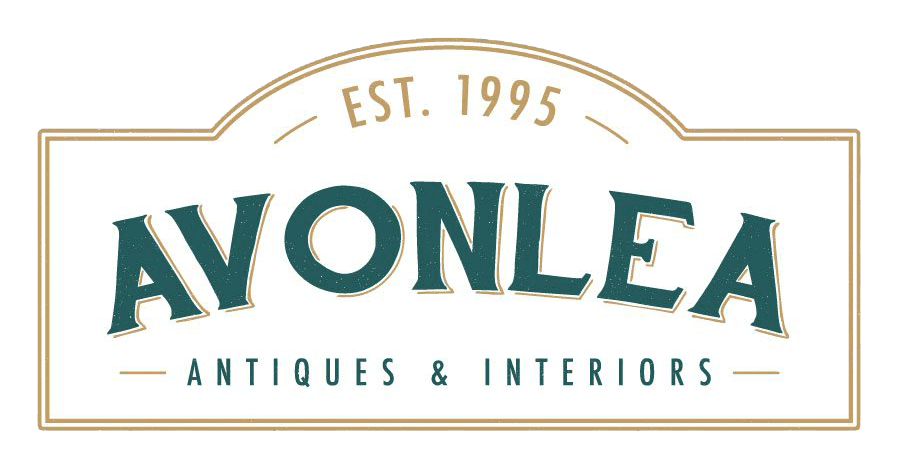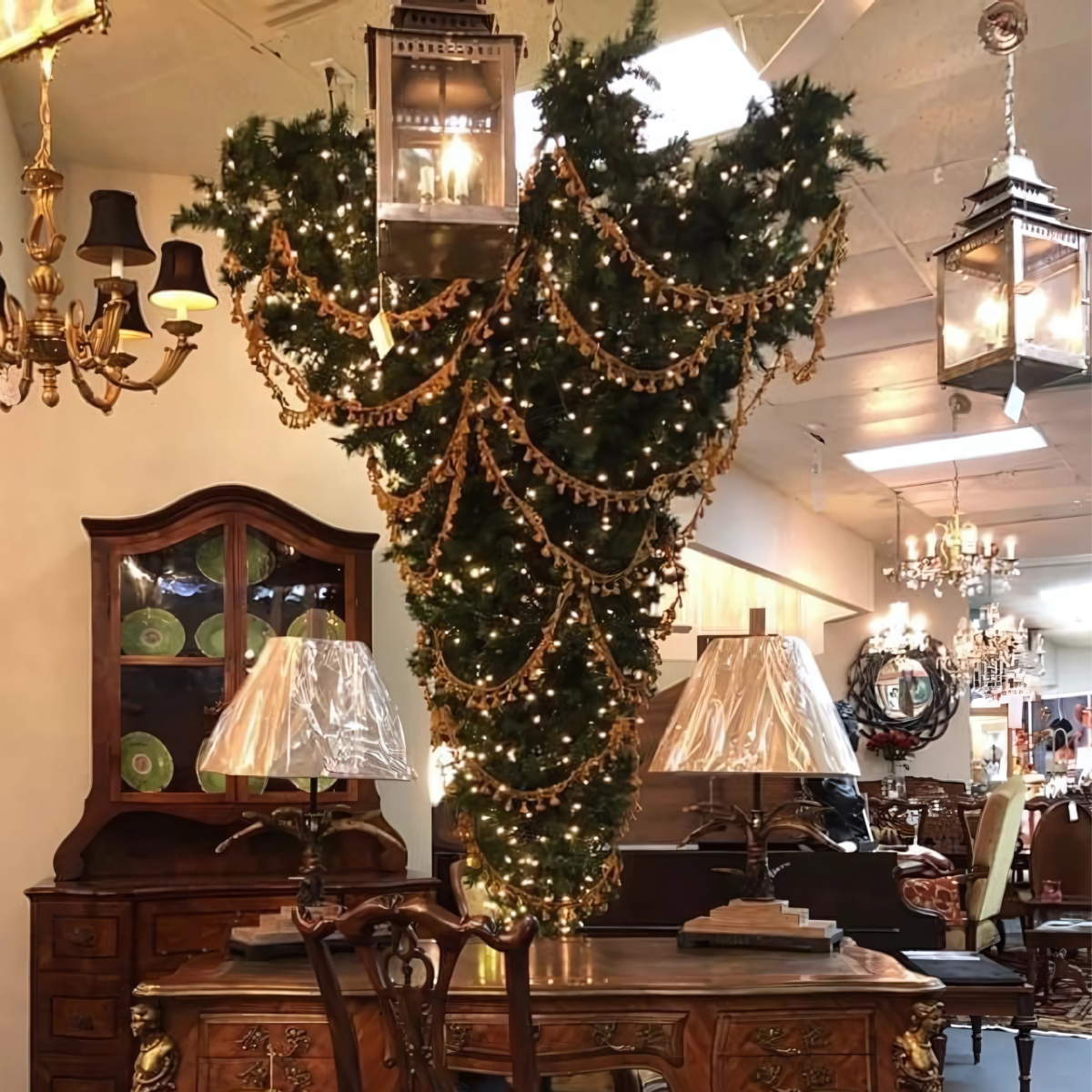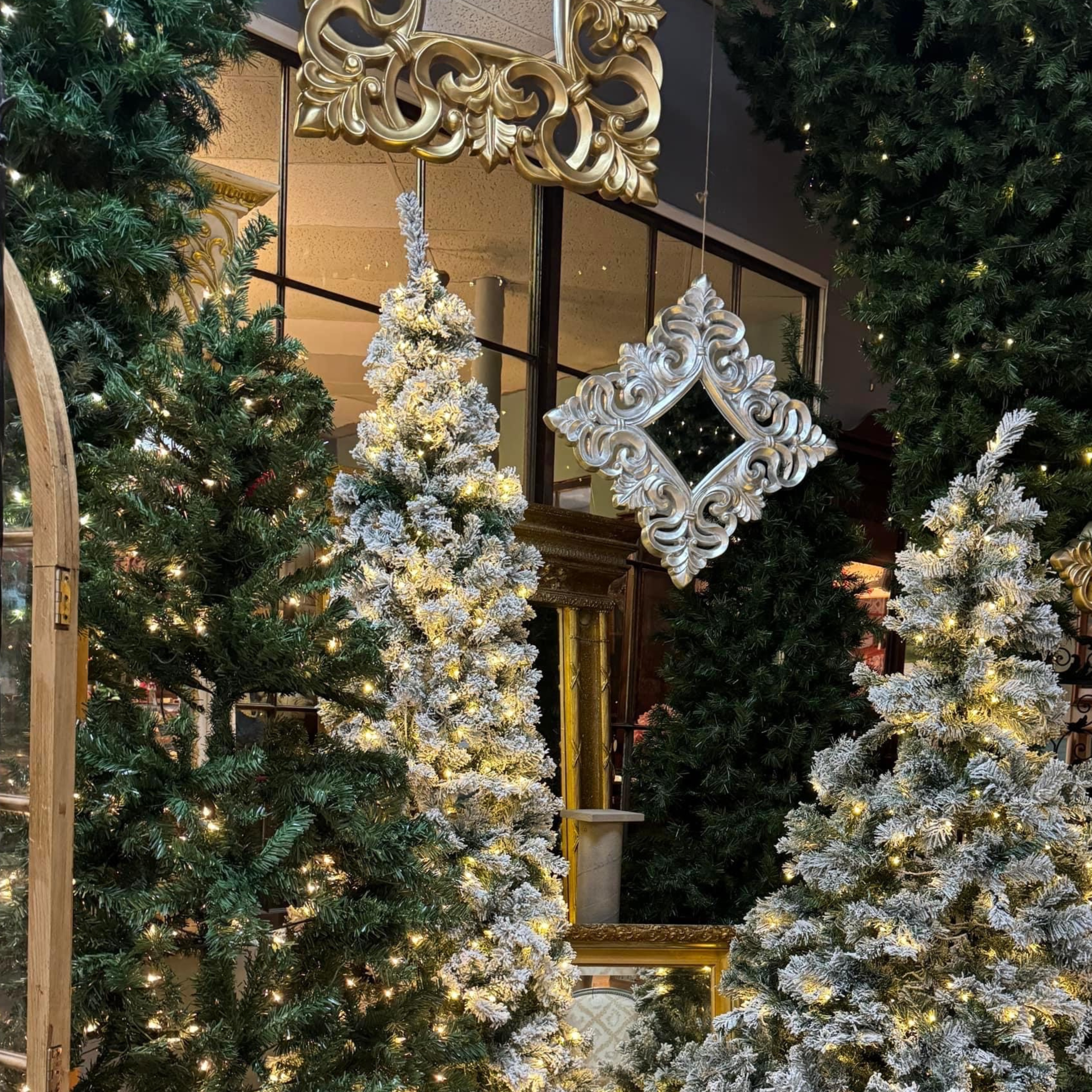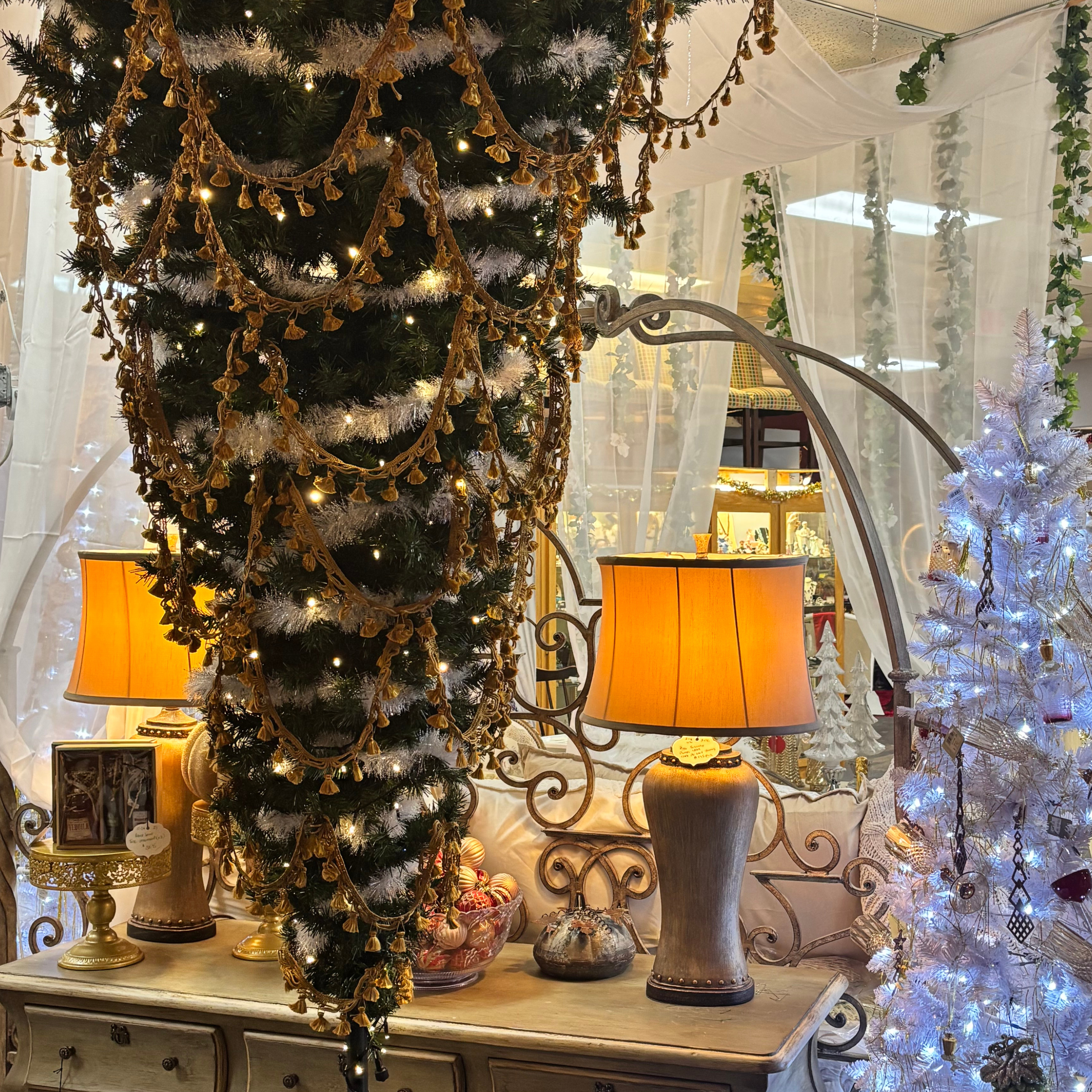At Avonlea Antique Mall, we pride ourselves on going all out with our holiday decorations, and this year is no exception. From twinkling lights to vintage ornaments, our festive displays are sure to get you in the holiday spirit. But one element of our Christmas decor stands out in a big way: the upside-down Christmas tree.
We’ve been using these quirky trees to adorn our space for the past six years, and they never fail to spark conversation and intrigue among our customers. While this might seem like a trendy new idea, the upside-down tree is actually steeped in history.
A Holiday Tradition with Historical Roots
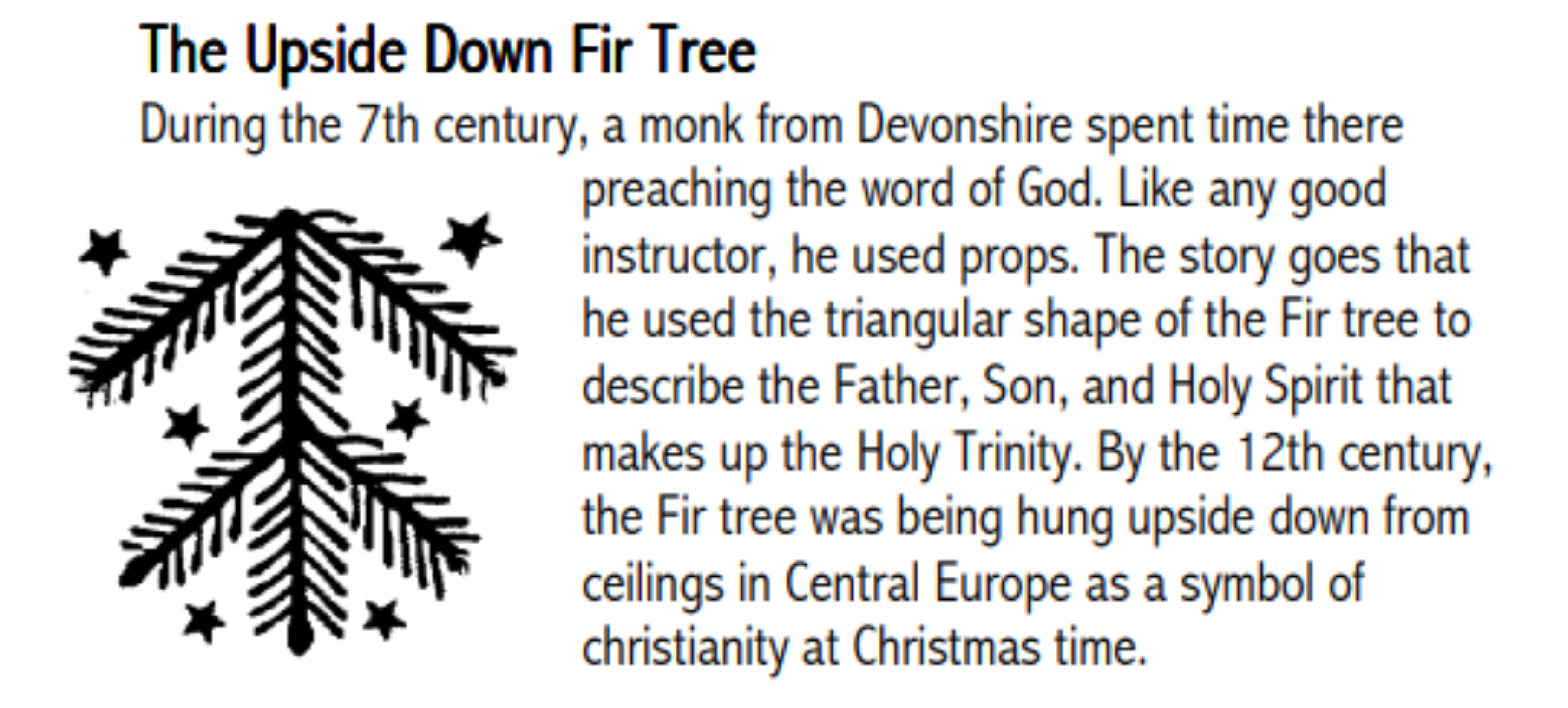
Image Source: Barry McWilliams’s The Legends of the First Christmas Trees, available here
The upside-down Christmas tree is a tradition with deep European roots. In fact, it dates back as far as the 7th century. According to Country Living Magazine, the legend goes that Boniface, a Benedictine monk, used the triangular shape of a fir tree to explain the Holy Trinity to pagans in Germany. The tree was hung upside down to symbolize Christianity, and its triangular shape was said to resemble the cross, further emphasizing the connection to the birth of Christ.
This tradition continued in Central and Eastern Europe well into the 12th century, with countries like Poland and Germany still hanging their Christmas trees upside down today. And it wasn’t just for religious reasons—there were also practical considerations. In his book Inventing the Christmas Tree, historian Bernd Brunner notes that in the 19th century, it was common for people in smaller homes to hang their trees from the rafters, especially in lower-class households where space was limited. The upside-down tree was both a space-saving solution and a beautiful decoration.
Why We Love the Upside-Down Tree at Avonlea
Here at Avonlea, we love the upside-down tree for both its historical significance and its practicality. The inverted tree serves as a beautiful reminder of the true meaning of Christmas, helping us stay focused on the season’s spiritual roots. Plus, the unique shape offers some practical benefits for our antique mall.
For one, the upside-down tree saves space. With the tree’s base pointing up toward the ceiling, we have more room for furniture and walking space around the tree, which helps prevent scratches on our vintage pieces. Additionally, ornaments hang downward, making them more visible and accessible to our customers. And, since the branches point upward, ornaments are out of reach of small hands—an added bonus for families with little ones.
But perhaps the best part? The upside-down tree leaves more space under the branches for gifts! With so much room for presents, the holiday season feels even more magical for both our customers and staff.
A Conversation Starter
Beyond its historical significance and practical advantages, the upside-down tree is a conversation piece. Customers often stop and ask about the origins of this unique tradition, giving us a chance to share a bit of Christmas history and engage with the community. Whether they love or hate the idea, the upside-down tree sparks memories of holiday traditions and stories that might otherwise be forgotten.
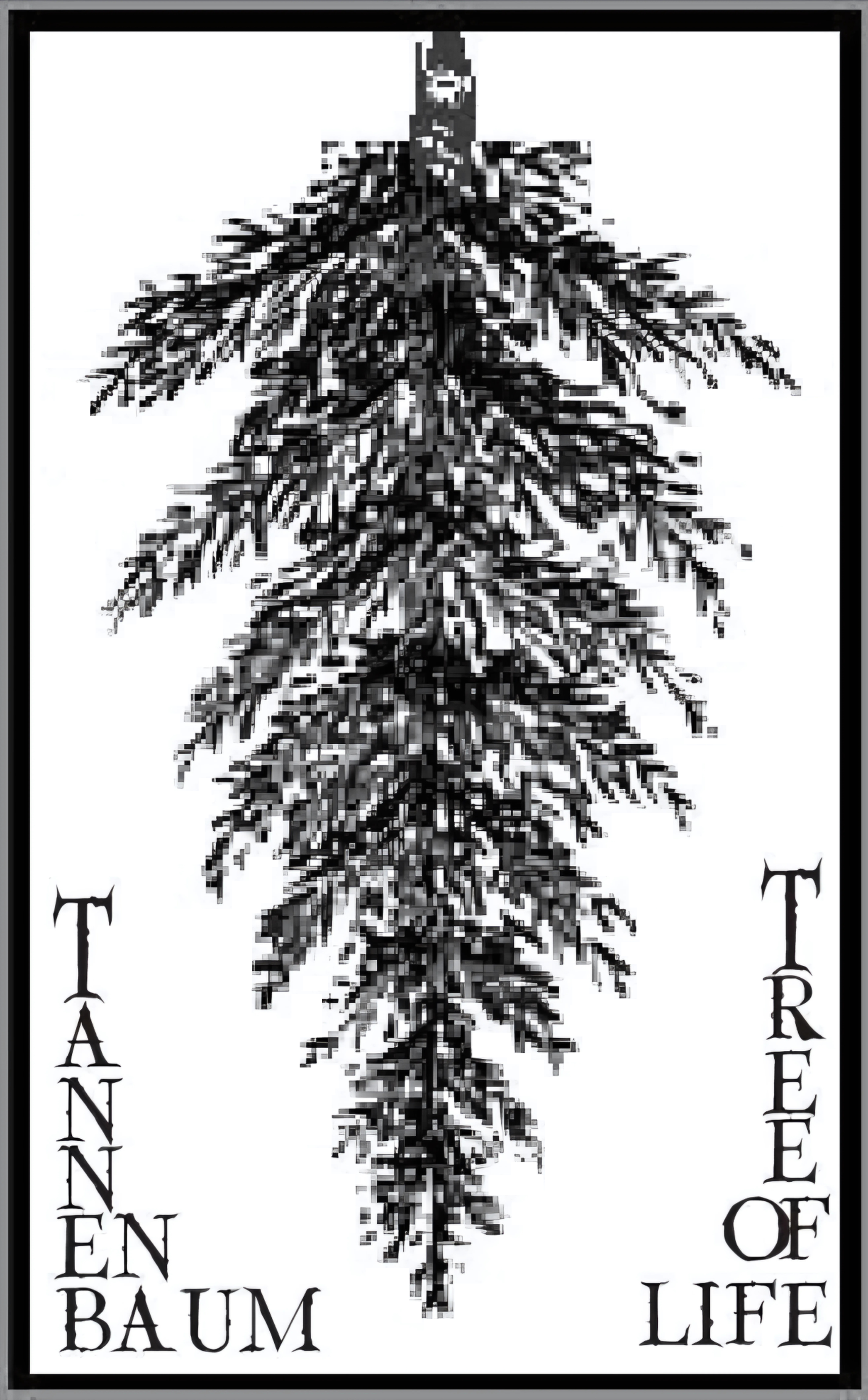
Image Source: Barry McWilliams’s The Legends of the First Christmas Trees, available here
A Timeless Tradition
So, while the upside-down Christmas tree might seem like a new trend, it’s actually a centuries-old tradition that continues to add charm and intrigue to our holiday displays. Whether you’re admiring the tree for its historical significance or simply enjoying its festive flair, we invite you to stop by Avonlea Antique Mall this holiday season to see our unique upside-down trees in person. And who knows—maybe it will become a part of your own Christmas tradition!
Sources:
- Country Living Magazine (2019). “The Surprising History of the Upside-Down Christmas Tree.”
- The Spruce (2023). “Why Some People Hang Their Christmas Trees Upside Down.”
- Brunner, Bernd. Inventing the Christmas Tree (2007).
- McWilliams, Barry (Eldrbarry). The Legends of the First Christmas Trees (2001)
